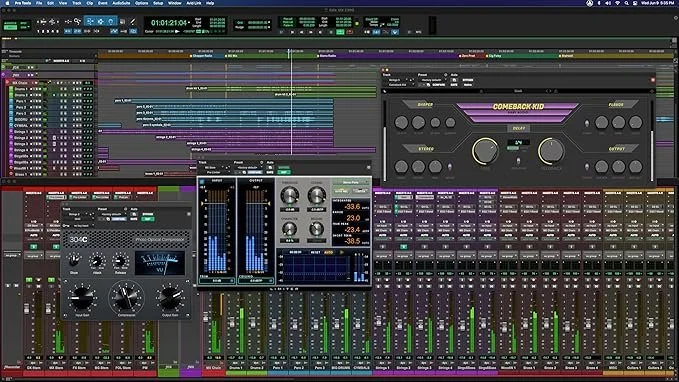Explaining Digital Audio Workstations (DAWs): What They Are and Choosing the Best One for You
In the world of music production, a Digital Audio Workstation (DAW) is an essential tool for both beginners and professionals. Whether you’re recording, editing, mixing, or mastering audio, a DAW provides the software environment to bring your creative ideas to life. But with so many options available, how do you know which one is the best for your needs? Let’s break it down.
What Is a DAW?
A Digital Audio Workstation (DAW) is software designed for recording, editing, and producing audio files. It acts as the hub for your music production process, allowing you to work with MIDI, manipulate audio clips, and integrate effects and virtual instruments.
DAWs are widely used in:
Music production
Sound design
Film scoring
Podcasting
Live performances
Key Features of a DAW
While different DAWs may have unique features, they all generally offer:
Recording and Editing: Multi-track recording capabilities for vocals, instruments, and MIDI.
Plugins and Effects: Support for virtual instruments and audio effects.
MIDI Sequencing: Tools to compose and arrange music using MIDI data.
Mixing and Mastering Tools: Features like EQ, compression, and automation for polishing your tracks.
User Interface: A workspace that allows you to arrange, edit, and visualize your project.
Popular DAWs, Their Strengths, and Who Uses Them
Here are some of the most popular DAWs, what makes them stand out, and examples of prominent users:
1. Ableton Live
Best For: Electronic music producers and live performances.
Strengths: Unique session view for non-linear composition, intuitive interface, and robust MIDI tools.
Popular Users: Skrillex, Deadmau5, Flume.
Platform: macOS, Windows.
2. Logic Pro
Best For: Mac users and singer-songwriters.
Strengths: Excellent virtual instruments and loops, seamless integration with macOS, and advanced MIDI editing.
Popular Users: Billie Eilish & Finneas, Calvin Harris, Ed Sheeran.
Platform: macOS only.
3. FL Studio
Best For: Beginners and beatmakers.
Strengths: Easy-to-use interface, pattern-based workflow, and lifetime free updates.
Popular Users: Martin Garrix, Metro Boomin, Avicii.
Platform: macOS, Windows.
4. Pro Tools
Best For: Professional studios and audio engineers.
Strengths: Industry-standard tools for audio recording and mixing, high-quality sound engine, and advanced editing features.
Popular Users: Dr. Dre, Hans Zimmer, Radiohead.
Platform: macOS, Windows.
5. Cubase
Best For: Film composers and hybrid producers.
Strengths: Comprehensive MIDI tools, excellent audio editing, and scoring features.
Popular Users: Zedd, Hans Zimmer, Armin van Buuren.
Platform: macOS, Windows.
6. Reaper
Best For: Budget-conscious creators.
Strengths: Affordable, customizable, and lightweight software with professional-grade features.
Popular Users: Tyler Smith (The Word Alive), Cockos enthusiast community.
Platform: macOS, Windows, Linux.
Choosing the Right DAW for You
When choosing a DAW, consider the following:
Your Budget: Prices range from free options like GarageBand to premium tools like Pro Tools Ultimate.
Your Operating System: Some DAWs, like Logic Pro, are platform-specific.
Your Genre and Workflow: Certain DAWs cater to specific styles of music or production methods.
Ease of Use: Beginners may prefer FL Studio or GarageBand, while professionals might lean towards Pro Tools or Logic Pro.
Community and Support: A large user base and accessible tutorials can make learning a DAW easier.
Final Thoughts
There is no one-size-fits-all answer to which DAW is the best. Each offers unique features tailored to different workflows and genres. The best approach is to explore free trials or demos and find the DAW that feels most intuitive and inspiring for your creative process.
Remember, the DAW is just a tool—your creativity and skills are what truly make the magic happen. Happy producing!





